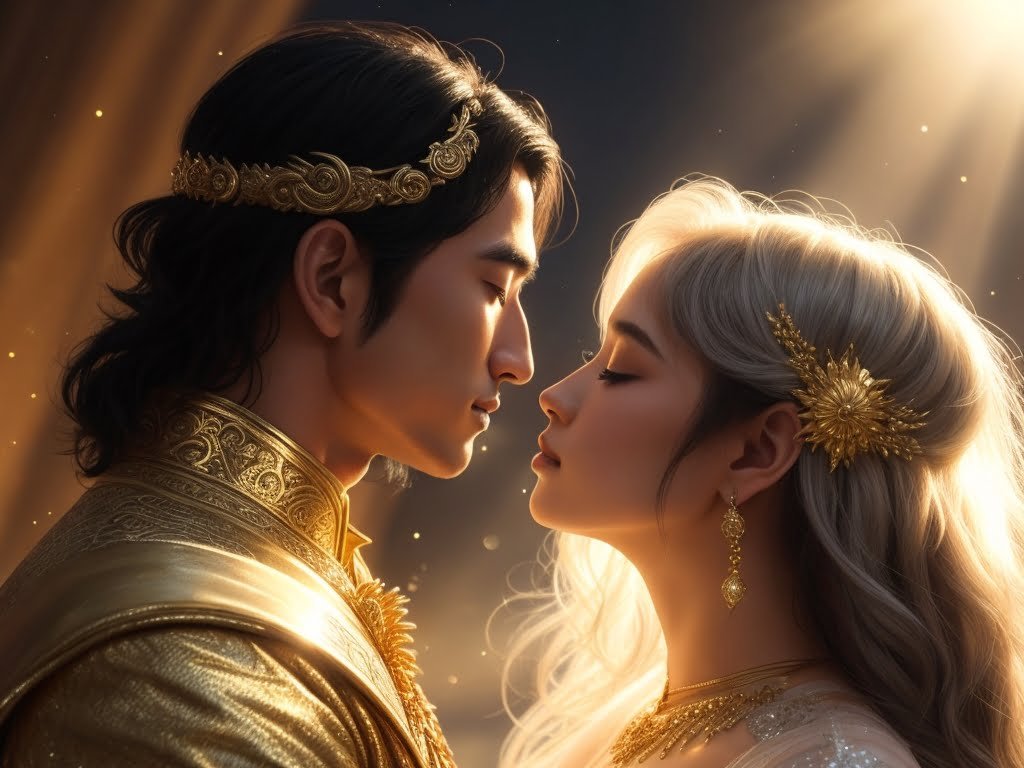In the tapestry of Slavic folklore, woven with threads of magic and myth, the romance of Dazhbog and Myesyats shines brightly. Dazhbog, the Sun God, and Myesyats, the Moon Goddess, were entwined in a dance that spanned the sky and played out through time itself. Their love story is a harmonious blend of warmth and serenity, day and night, a lesson that opposites can indeed attract and create a perfect balance.
The first time their gazes met, time itself seemed to stand still. Dazhbog’s warmth was met with Myesyats’ calm composure. They were intrigued by one another, curious about how two seemingly contrasting beings could feel such a strong connection.
Their dance began, a dance that would continue each day and each night. They moved in perfect synchrony, each step a reflection of understanding and affection. Their romance was a dance, seamless and flowing, a rhythm that only they could hear.
Though their love was profound, they knew they must part each day. The pain of separation was real, but it only made their love grow stronger. The longing in their hearts added depth to their connection, a yearning that would be fulfilled as the cycle continued.
Their reunion was a celebration, a moment they both eagerly awaited. The joy of being together again, the embrace that sealed their love, was a reminder that true love can overcome any obstacle, even time itself.
Their dance never ended; it was eternal, just like their love. The Sun God and the Moon Goddess taught the world that differences could be embraced, that love could thrive in the most unexpected places, and that true connection knows no bounds.
The story of Dazhbog and Myesyats is a tale that transcends the ordinary. It is a dance, a romance, and a lesson that love is indeed eternal. A story for the ages, a love that will never fade, and a dance that will continue forever.
